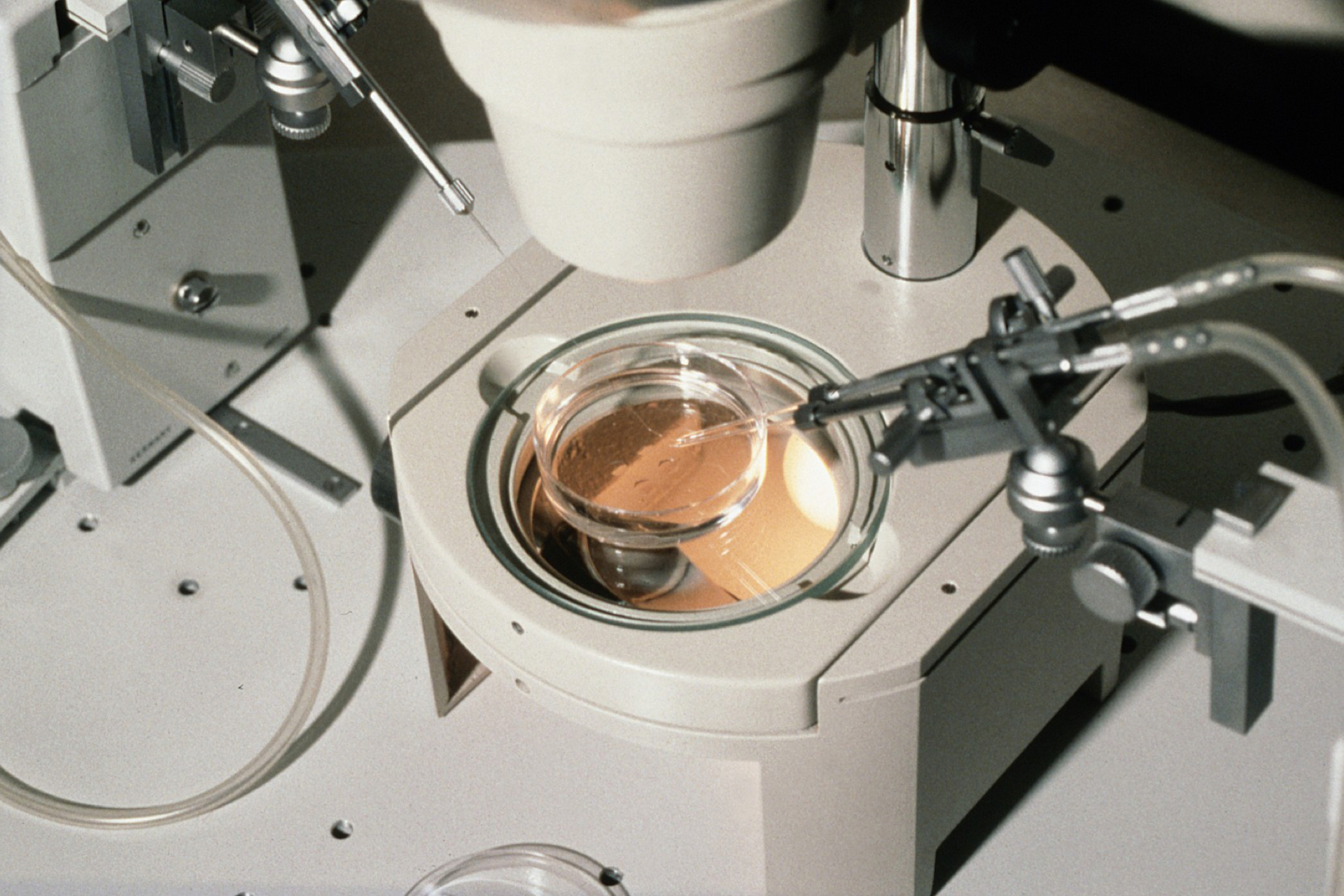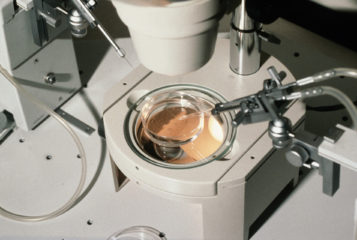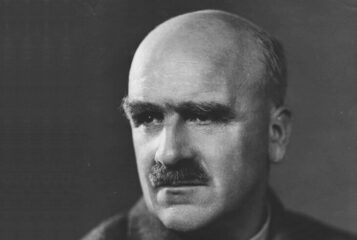| Presenting the First Test-Tube Baby: The Edwards and Steptoe Lecture of 1979 Edited by Professor Susan Bewley, Professor James Owen Drife and Dr Fiona Kisby Littleton Published by Cambridge University Press ISBN-10: 100921103X, ISBN-13: 978-1009211031 Buy this book from Amazon UK |
 |
The birth of the world's first 'test-tube baby', Louise Brown, on 25 July 1978, heralded a watershed moment in the history of assisted conception treatment. Brown's birth represented the culmination of a decade of collaborative work by Patrick Steptoe, a consultant obstetrician working in Oldham and Dr Robert Edwards, a research scientist at the University of Cambridge. Together, Steptoe and Dr Edwards were able to demonstrate that it was possible to create healthy, living children through in vitro fertilisation (IVF) treatment.
Following Brown's birth, Steptoe and Dr Edwards took part in a number of media interviews. However, they did not formally present their work to their professional peers until they gave a seminal lecture at the Royal College of Obstetricians and Gynaecologists (RCOG) in January 1979. This lecture was recorded on tape and stored within the RCOG archive until it was recently rediscovered by Dr Fiona Kisby Littleton, a medical historian and fellow of the Royal Historical Society.
Dr Kisby Littleton has subsequently transcribed this formative lecture and researched the social and clinical landscape in which Steptoe and Dr Edwards' early work took place. The culmination of Dr Littleton's research has been the publication of a celebratory book, entitled 'Presenting the First Test-Tube Baby: The Edwards and Steptoe Lecture of 1979', which was co-edited with Susan Bewley, emeritus professor of obstetrics and women's health at King's College London, and James Owen Drife, emeritus professor of obstetrics and gynaecology at the University of Leeds.
This new book contains the full transcript of Steptoe and Dr Edwards' 1979 lecture, along with copies of the original presentation slides which were used to illustrate the work that they had achieved. The book also includes the first-hand experiences of others involved in this pivotal moment of IVF history including medical professionals, patients and journalists, thereby capturing the atmosphere and the wider backdrop in which Steptoe and Dr Edwards' research took place.
The book starts with a foreword by Brown, who cites that one of the most important aspects of this book is that 'it describes what happened in the original words of Dr Edwards and Steptoe'. She recognises that the book 'provides an important record for the future, capturing aspects of the early days of IVF that might otherwise be lost forever as time moves on'.
There is a general introduction followed by a chapter on the historical context of Steptoe and Dr Edwards' research and Brown's birth. It was interesting to learn just how difficult it had been for Steptoe and Dr Edwards to obtain research funding for their work and how many people, both professionals and members of the public, viewed their work with 'scepticism and disdain'.
Despite the worldwide celebration that took place when Brown had been born, Steptoe and Dr Edwards were still met with significant criticism, including accusations that they were acquiring vast personal wealth from media deals, queries around the validity and safety of their work and general concerns as to whether IVF treatment was ethically acceptable. Many clinicians and researchers within the field of obstetrics and gynaecology called upon Steptoe and Dr Edwards to publish their work in a peer-reviewed journal to 'prove' how they had achieved Brown's conception and birth. However, Steptoe and Dr Edwards wanted to wait until they had achieved more than one IVF birth before publishing their data, to ensure that their initial achievement could be repeated. Their research was ultimately published in September 1980, more than two years after Brown's birth.
Steptoe and Dr Edwards' RCOG lecture in 1979 helped to address many of the questions raised by their professional peers while the duo were still in the process of preparing their manuscripts for publication. Chapter 3 of the book contains the full transcript of the RCOG lecture and it is inspiring to read about the determination, perseverance and ingenuity that was exercised to ultimately achieve the first IVF birth. Overall, 282 women were treated at Steptoe's clinic in Oldham. 495 laparoscopic egg collections were attempted, which resulted in four clinical pregnancies and finally two live births.
Steptoe and Dr Edwards described the clinical and scientific aspects of their work in detail during the RCOG lecture, and they used photographs to illustrate their methodology both within the operating theatre and the laboratory. There is a heavy use of medical terms which may make the transcript more challenging to follow for readers who do not have a background in reproductive medicine. However, it is easy to understand the meticulous attention to detail and the high level of resilience that the research team demonstrated over their decade of experimentation.
Dr Kisby Littleton arranged for ten audience members who were present for the original 1979 lecture to come together and discuss their memories of that evening, with the results of this 'reminiscence meeting' presented in Chapter 4. It was warming to hear that both Steptoe and Dr Edwards' partners were present for the lecture and that the evening was viewed as a celebration of their decade-long pursuit for IVF success. However, the audience members did recall that there was still professional jealousy in the obstetrics and gynaecology field at the time. The group recalled that there was some disgruntlement among the other teams who had been trying to achieve an IVF birth, as they felt that Steptoe and Dr Edwards were still withholding key information such as the formula of their culture medium, thereby preventing others from repeating their success.
I particularly enjoyed Chapter 5, in which Janice Barker, a journalist from Oldham, provided a comprehensive and interesting account of the excitement that was felt among the Oldham press as Steptoe and Dr Edwards edged closer and closer to IVF success. Barker describes the various ways the journalists tried to stay abreast of the developments that were taking place at Steptoe's Oldham clinic, and the race to share the news of Brown's birth with the local community.
Overall, this is a well-researched book which provides new and valuable insights into one of the most significant milestones in the history of assisted conception treatment. This book will be of particular interest to people working in the field of reproductive medicine, and people who have a keen interest in the history of medicine.
Buy Presenting the First Test-Tube Baby: The Edwards and Steptoe Lecture of 1979 from Amazon UK.






Leave a Reply
You must be logged in to post a comment.